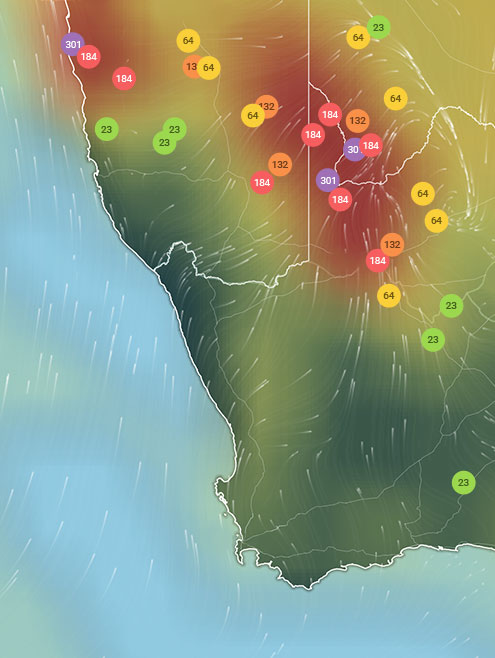Achetez un moniteur et partagez vos données sur la qualité de l'air dans votre ville.
69K personnes suivent cette ville






CONTRIBUTEURS DE DONNÉES SUR LA QUALITÉ DE L'AIR
Renseignes toi plus sur les sources des contributeurs et des données| Temps | Partiellement nuageux |
| Température | 96.8°F |
| Humidité | 69% |
| Vent | 18.4 mp/h |
| Pression | 29.6 Hg |
| # | city | IQA US |
|---|---|---|
| 1 | Chiang Rai, Chiang Rai | 153 |
| 2 | Uttaradit, Uttaradit | 138 |
| 3 | Mae Mo, Lampang | 131 |
| 4 | Sukhothaï, Sukhothai | 111 |
| 5 | Chiang Mai, Chiang Mai | 110 |
| 6 | Doi Saket, Chiang Mai | 108 |
| 7 | San Sai, Chiang Mai | 106 |
| 8 | Phitsanulok, Phitsanulok | 103 |
| 9 | Mae On, Chiang Mai | 91 |
| 10 | Mae Sot, Tak | 88 |
(Heure locale)
CLASSEMENT MONDIAL DE l’IQA
| # | station | IQA US |
|---|---|---|
| 1 | Highway District | 58 |
| 2 | Norwich International School | 55 |
| 3 | Norwich International School - EY Building | 49 |
| 4 | UBIS factory | 49 |
| 5 | Samut Sakhon Wittayalai School | 37 |
(Heure locale)
CLASSEMENT MONDIAL DE l’IQAIQA US
49
IQA en direct
Bon
| Niveau de pollution de l’air | Indice de pollution de l’air | Principaux polluants |
|---|---|---|
| Bon | 49 IQA US | PM2.5 |
| Polluants | Concentration | |
|---|---|---|
| PM2.5 | 12µg/m³ | |
PM2.5
x2.4
La concentration de PM2,5 à Samut Sakhon est actuellement 2.4 fois supérieure à la valeur guide annuelle de l'OMS pour la qualité de l'air
| Profitez de vos activités de plein air. | |
| Ouvrez vos fenêtres pour faire rentrer de l'air frais. Obtenez un moniteur |
| Jour | Niveau de pollution | Temps | Température | Vent |
|---|---|---|---|---|
| dimanche, avr. 21 | Mauvais pour les groupes sensibles 139 AQI É.-U. | 93.2° 80.6° | ||
| lundi, avr. 22 | Moyen 99 AQI É.-U. | 91.4° 84.2° | ||
| mardi, avr. 23 | Moyen 89 AQI É.-U. | 91.4° 84.2° | ||
| Aujourd’hui | Bon 49 AQI É.-U. | 96.8° 84.2° | ||
| jeudi, avr. 25 | Moyen 55 AQI É.-U. | 91.4° 84.2° | ||
| vendredi, avr. 26 | Moyen 57 AQI É.-U. | 93.2° 84.2° | ||
| samedi, avr. 27 | Moyen 62 AQI É.-U. | 93.2° 84.2° | ||
| dimanche, avr. 28 | Moyen 62 AQI É.-U. | 93.2° 84.2° | ||
| lundi, avr. 29 | Moyen 63 AQI É.-U. | 95° 82.4° | ||
| mardi, avr. 30 | Moyen 65 AQI É.-U. | 93.2° 80.6° |
Intéressé par des prévisions horaires? Télécharger l’application
4Contributeurs
Gouvernement
2 stations
Entreprise
1 station
2 Anonymous Contributors

2 stations
3 Data sources